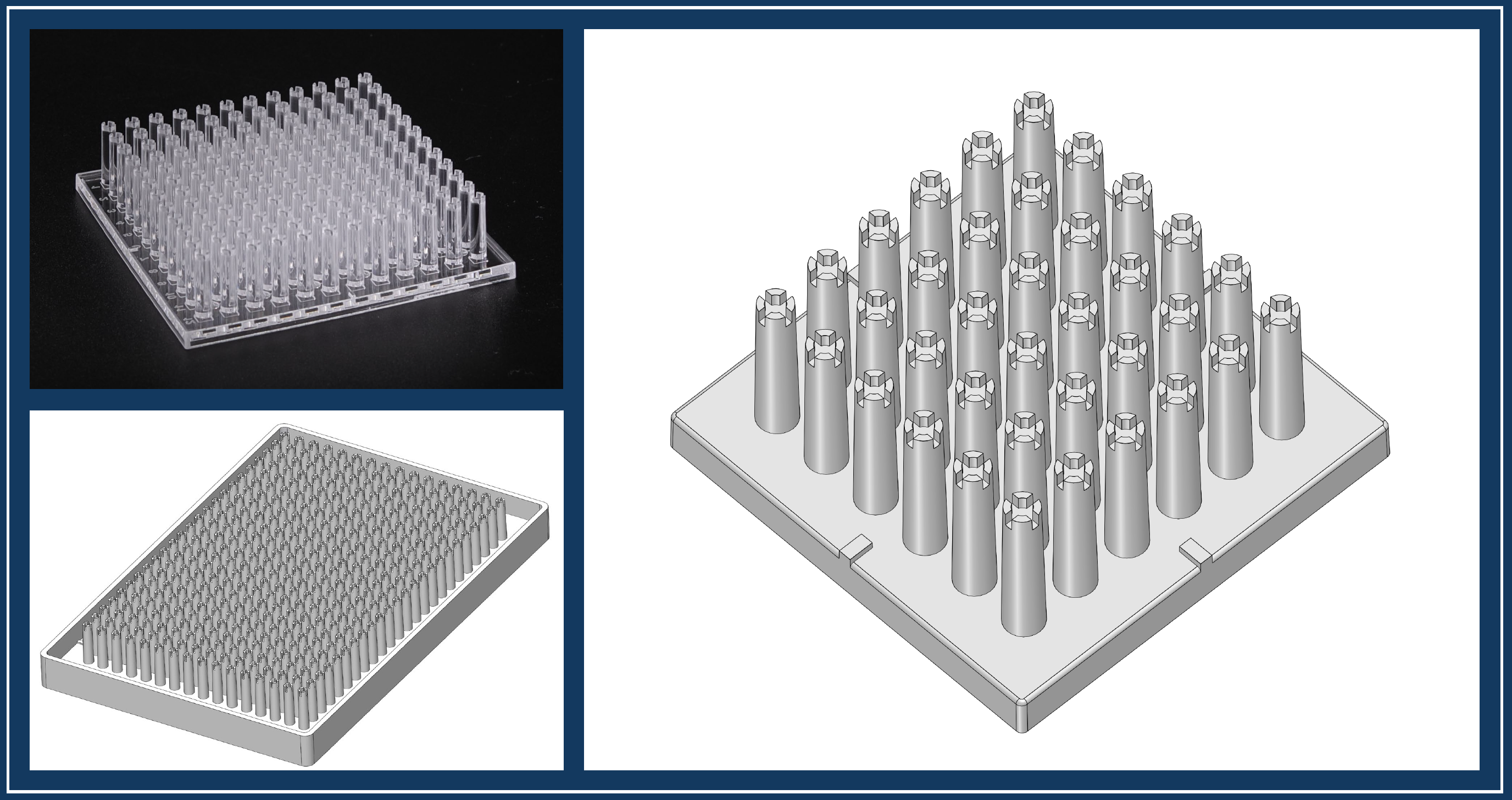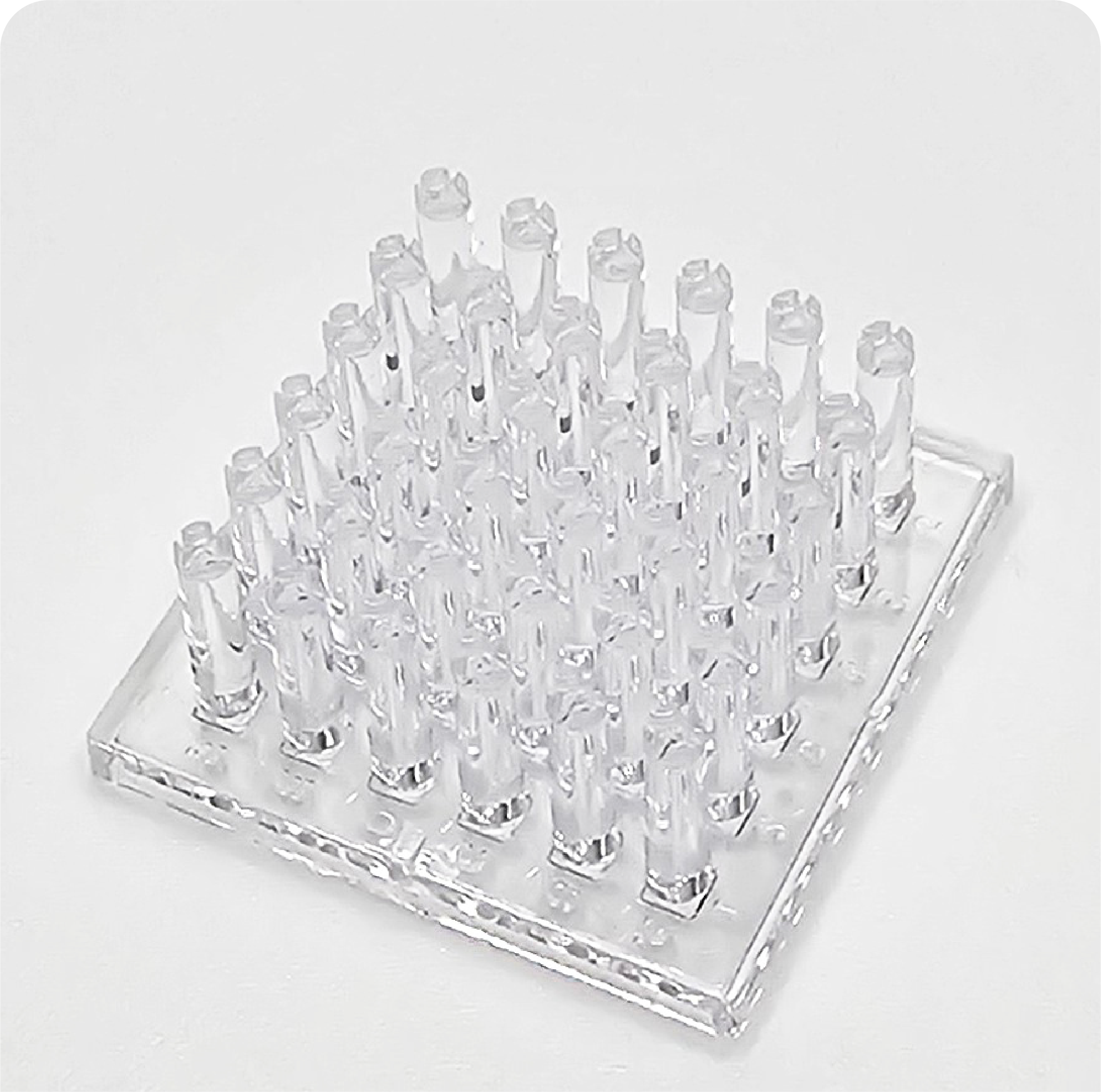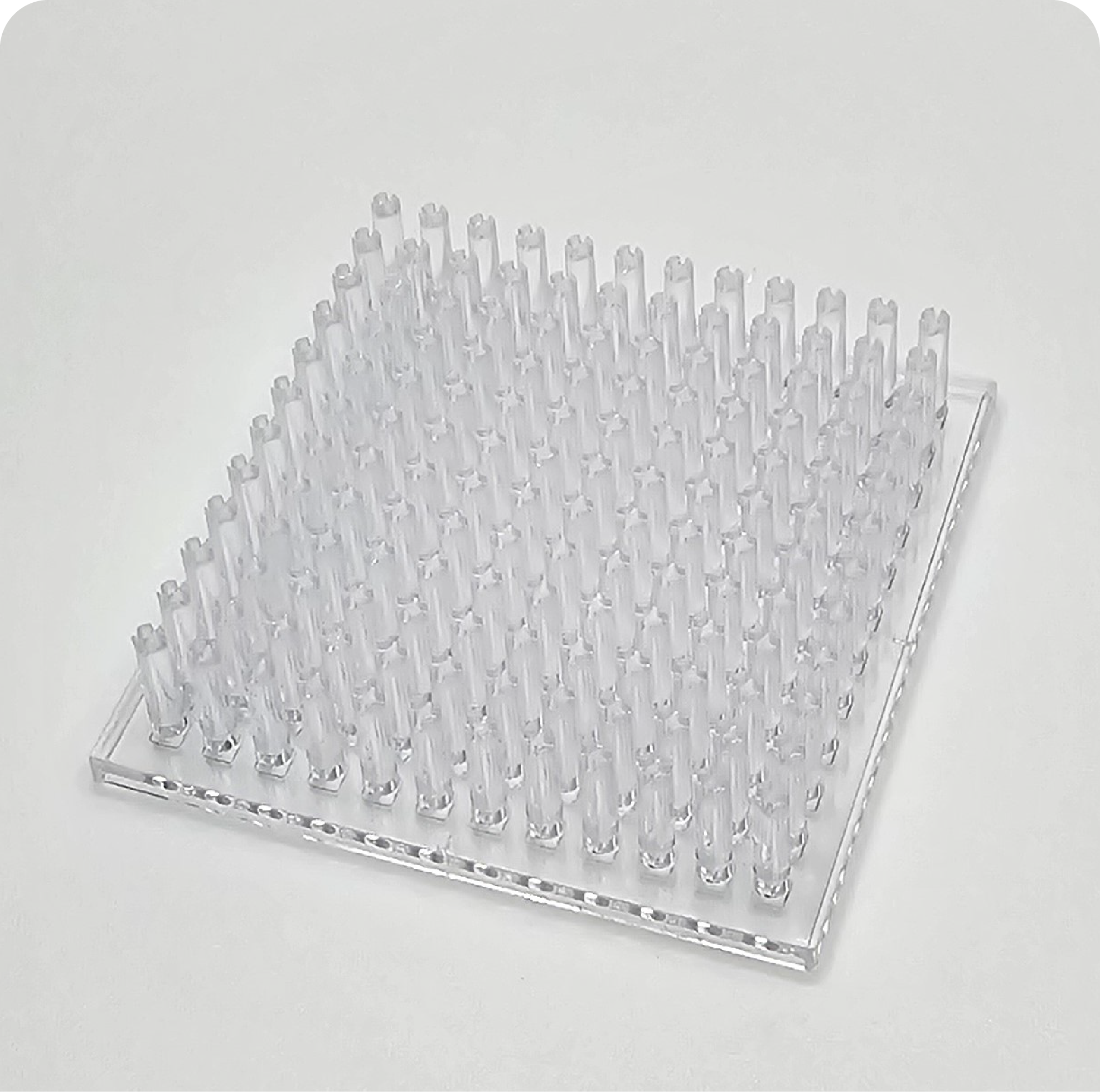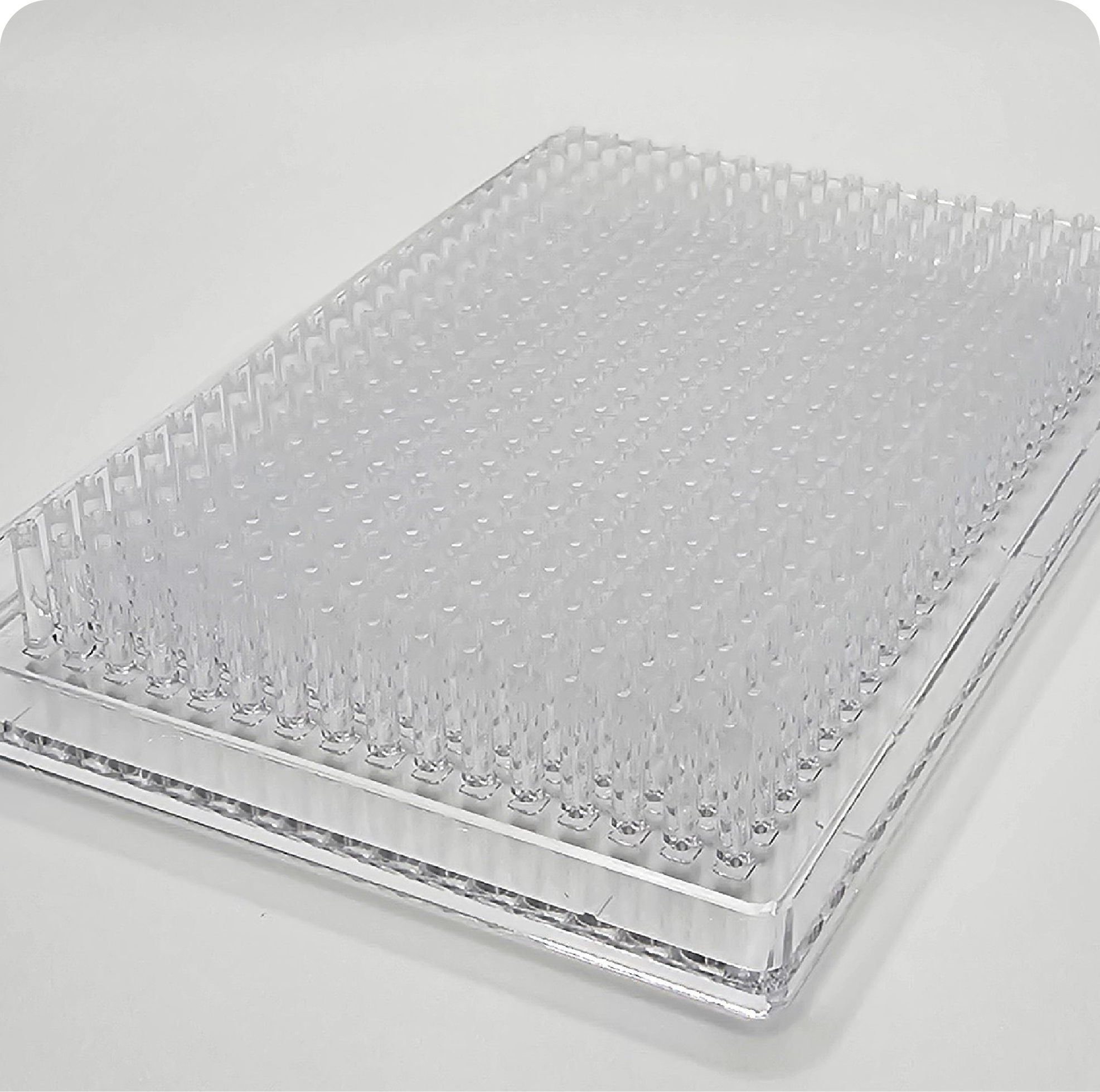How Pillar Plate Works for 3D Cell Culture and Analysis

-
Simple and robust cell encapsulation in hydrogels on pillars: Sidewalls and slits ensure reproducible and robust loading of cells and spheroids in hydrogels on pillars, preventing cell spot detachment and supporting long-term 3D cell and organoid culture.
-
Minimum assay volume: Each pillar accommodates an optimum of 5 µL of hydrogel without spillage.
-
Uniform nutrients and oxygen diffusion: The small volume of the pillar plate facilitates uniform diffusion of nutrients and oxygen, enhancing cell growth, differentiation, maturation, and function.
-
High flexibility in 3D cell and organoid culture and analysis: The pillar plates can be sandwiched with the perfusion plates as well as standard 384-well plates interchangeably, enabling flexibility in 3D cell and organoid culture and analysis.
-
On-chip cell testing, staining, and imaging: The pillar plate with 3D-cultured cells can be tested with compounds, stained with fluorescent dyes and antibodies, and imaged with standard fluorescence microscopes at 4x and 10x magnification for high-content imaging (HCI) and immunofluorescence assays.
Key Features and Benefits
- Rapid and robust cell/spheroid loading and encapsulation: Single cells and spheroids in hydrogels can be loaded on the pillar plate by manual dispensing, pillar plate stamping, spheroid transferring, and microarray 3D bioprinting.
- High-throughput microarray 3D bioprinting: Enables layer-by-layer dispensing of cells and spheroids in hydrogels on the pillar plate for the scale-up production of organoids.
- Flexible 3D cell culture approaches: 3D cells and organoids can be cultured statically or dynamically by sandwiching pillar plates with deep well plates and perfusion plates.
- Advanced surface functionalization: Hydrophilic coatings on the pillar plate prevent air bubble entrapment and cell spot detachment, ensuring long-term 3D cell cultures in hydrogels.
- On-chip cryopreservation of human organoids: 3D cells and organoids cultured on the pillar plate can be cryopreserved directly for long-term storage and on-demand delivery of assay-ready pillar plates.
- Scalable throughput options: Available in 36-, 144-, and 384-pillar formats to support varying research and screening needs.
Modular Design for Versatile Applications

Supports both static and dynamic cultures under various test conditions.
Click! Product selection guidance available for various applications
Publications




